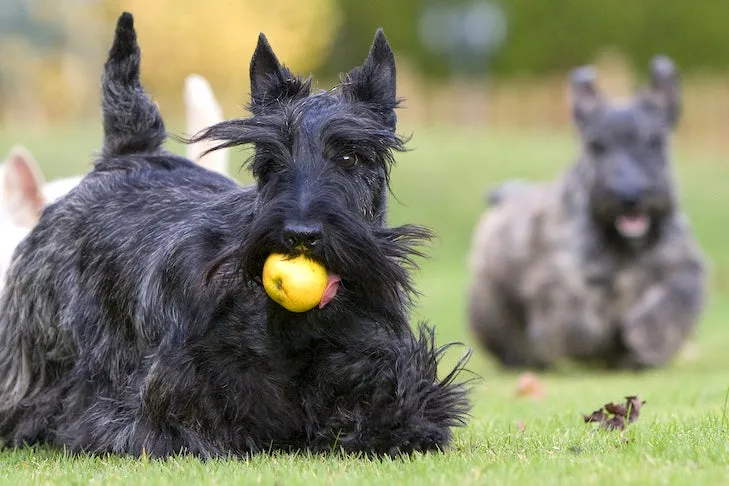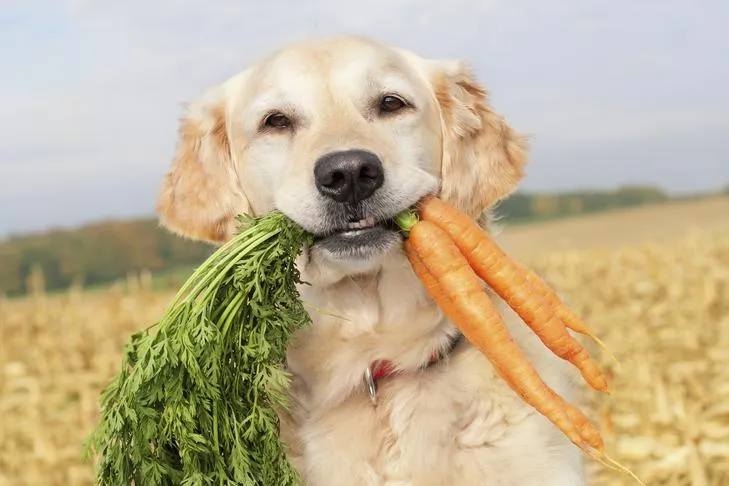It’s natural to want to share a bite of your favorite snack with your furry best friend, especially when they give you those adorable puppy eyes. Many dog owners assume that if a food is safe for humans, it must be equally safe for their canine companions. However, this is a dangerous misconception. Dogs digest food very differently than humans, and certain seemingly harmless fruits can be highly toxic, leading to severe health issues, and in extreme cases, even death. Understanding which fruits dogs can’t eat is not just helpful—it’s critical for ensuring your pet’s safety and well-being.
While dogs are omnivores and can derive some nutritional benefits from certain fruits and vegetables, these should always be given in moderation as treats, never as a staple of their diet. The risks associated with feeding the wrong fruits far outweigh the benefits of an occasional treat. This guide will focus on the fruits you must absolutely keep away from your dog, while also providing a comprehensive list of safe fruits that can be enjoyed responsibly. For a broader overview of human foods, explore our article on what can i feed my dog human food.
Understanding Dog Digestion and Fruit Safety
A dog’s digestive system is designed primarily for meat, and while they can process plant matter, their bodies react differently to various compounds found in fruits. Some fruits contain natural toxins, high sugar levels, or parts like seeds and pits that pose choking hazards or internal blockages. Knowing the specific dangers associated with each fruit is vital. Always err on the side of caution; if you’re unsure, don’t share.
Fruits Dogs Must AVOID at All Costs
This section is paramount for every dog owner. The following fruits contain substances that are toxic to dogs or present significant health risks. Keep these completely out of your dog’s reach.
Avocado
While avocado is a superfood for humans, it’s a definite no-go for dogs. The pit, skin, and leaves of the avocado plant contain persin, a fungicidal toxin that can cause serious gastrointestinal upset in dogs, including vomiting and diarrhea. Although the flesh of the avocado contains lower concentrations of persin, it can still be enough to cause issues for sensitive dogs.
Beyond persin, avocado flesh is also very high in fat. Excessive fat intake can lead to pancreatitis in dogs, a painful and potentially life-threatening inflammation of the pancreas. The large pit also poses a significant choking hazard and can cause an intestinal obstruction if swallowed. Always ensure that any avocado remnants are disposed of securely in a dog-proof bin.
Cherries
With the exception of the sweet, fleshy fruit around the seed, most parts of a cherry plant, including the leaves, stems, and especially the pits, contain cyanide. Cyanide is a highly poisonous substance that disrupts cellular oxygen transport, meaning your dog’s blood cells cannot get enough oxygen. Ingesting cherry pits can lead to cyanide poisoning, which is a severe veterinary emergency.
Symptoms of cyanide poisoning include dilated pupils, difficulty breathing, and bright red gums. If your dog has access to a cherry tree or has eaten whole cherries with pits, seek immediate veterinary attention. Ensure all cherry pits are safely discarded in a trash receptacle inaccessible to your dog. For those interested in safe fruit options, our article on what fruits can dogs eat and not eat offers a broader perspective.
Grapes and Raisins
Grapes and raisins are perhaps one of the most infamous and dangerous fruits for dogs. They are highly toxic and can cause acute sudden kidney failure in dogs, regardless of breed, age, or sex. The exact toxic substance in grapes and raisins is still unknown, which makes them particularly insidious. Even a small amount can be fatal for some dogs, while others might tolerate slightly more—but there is no known safe amount.
Symptoms of grape or raisin toxicity include vomiting, diarrhea, lethargy, decreased appetite, abdominal pain, and reduced urination. If you suspect your dog has eaten any amount of grapes or raisins, contact your veterinarian or an emergency animal hospital immediately. This is a critical situation requiring urgent medical intervention. Always store grapes and raisins securely, well out of your dog’s reach, and be vigilant about fallen fruit if you have grapevines.
Tomatoes (Especially Green Parts)
The ripened red flesh of a tomato is generally considered safe for dogs in very small quantities. However, the green parts of the tomato plant—the leaves, stems, and unripe green tomatoes—contain a toxic substance called solanine. While a dog would typically need to ingest a large amount of these green parts to become seriously ill, it’s safer to avoid feeding tomatoes altogether.
Symptoms of solanine poisoning can include gastrointestinal upset, lethargy, weakness, and loss of coordination. If you have a vegetable garden, ensure your dog cannot access tomato plants. Stick to established dog-safe treats to avoid any potential risks associated with tomatoes.
Safe Fruits for Dogs (in Moderation)
While the focus is on what fruits dogs can’t eat, it’s also helpful to know which ones are safe to offer as occasional, healthy treats. Always remember: moderation is key, and proper preparation is essential to remove any hazardous parts.
Apples
Apples are a fantastic source of vitamins A and C, along with fiber. They are low in protein and fat, making them an ideal snack for older dogs. Always remove the core and seeds before serving, as apple seeds contain small amounts of cyanide. Cut apples into bite-sized pieces to prevent choking. Frozen apple slices can be a refreshing treat on a warm day.
 Scottish Terriers exploring a grassy area
Scottish Terriers exploring a grassy area
Bananas
Bananas are a great low-calorie treat rich in potassium, vitamins, biotin, fiber, and copper. They are also low in cholesterol and sodium. However, due to their high sugar content, bananas should only be given as an occasional treat and not as a regular part of your dog’s diet. A few small slices are usually sufficient.
Blueberries
Often called a superfood, blueberries are packed with antioxidants, which help prevent cell damage. They are also rich in fiber and phytochemicals. Blueberries are small and easy for dogs to eat, making them a popular training treat. You can offer them fresh or frozen.
Cantaloupe
Cantaloupe is nutrient-dense, low in calories, and an excellent source of water and fiber, making it hydrating. However, it is high in sugar, so it should be given in moderation, particularly for dogs who are overweight or have diabetes. Remove the rind and seeds, and cut the flesh into small cubes.
Cranberries
Both fresh and dried cranberries are safe in small quantities, though many dogs might not enjoy their tart taste. Cranberries can offer antioxidant benefits. If using dried cranberries, ensure they are unsweetened, as added sugars are unnecessary for dogs. Too many cranberries can cause an upset stomach, so moderation is crucial.
Cucumbers
Cucumbers are particularly beneficial for overweight dogs because they contain very few carbohydrates or fats and are largely composed of water, providing satiating hydration. They are loaded with vitamins K, C, and B1, as well as potassium, copper, magnesium, and biotin. Sliced cucumbers make an excellent, cool treat, especially when frozen.
 Russell Terrier with cucumber slices on its head
Russell Terrier with cucumber slices on its head
Mango
This sweet tropical fruit is a good source of vitamins A, B6, C, and E, along with potassium, beta-carotene, and alpha-carotene. As with peaches and cherries, the hard pit of a mango contains small amounts of cyanide and is a choking hazard, so always remove it completely. Mango is high in sugar, so offer it as an occasional treat in small, peeled, bite-sized pieces.
Oranges
Veterinarians confirm that oranges are fine for dogs, but many dogs are put off by their strong citrus smell and taste. Oranges provide vitamin C, potassium, and fiber. Only offer the juicy flesh in small quantities, and always remove the peel and seeds. The peel is difficult for dogs to digest, and the oils can cause stomach upset.
Peaches
Fresh or frozen peach slices (without the pit) are a good source of fiber and vitamin A. Like cherries, peach pits contain cyanide and are a choking hazard. Ensure the flesh is completely cut away from the pit, and dispose of pits securely. Avoid canned peaches, which are typically loaded with sugary syrups.
Pears
Pears are a healthy snack, high in copper, vitamins C and K, and fiber. When sharing pears, cut the flesh into bite-sized chunks and remove the core and seeds, as seeds contain traces of cyanide. Again, avoid canned or jarred pears with added sugars.
 Siberian Husky puppy playfully held near an apple tree
Siberian Husky puppy playfully held near an apple tree
Pineapple
Small chunks of fresh pineapple, with the prickly outer peel and crown removed, make a sweet treat for dogs. Pineapple is rich in vitamins, minerals, and fiber. It also contains bromelain, an enzyme that can aid protein absorption. Do not offer canned pineapple, which is often packed in sugary syrup.
Pumpkin
Pure pumpkin puree (not pumpkin pie filling) is an incredibly healthy food for dogs. It’s full of antioxidants and is well-known for its ability to help relieve both diarrhea and constipation in dogs. You can buy 100% pumpkin puree or roast fresh pumpkin and feed the peeled flesh. It’s a versatile and beneficial addition to a dog’s diet when given appropriately.
Raspberries
Raspberries are safe for dogs in moderation and contain beneficial antioxidants. They are low in sugar and calories but high in fiber, manganese, and vitamin C. Raspberries are particularly good for senior dogs due to their anti-inflammatory properties, which can help aging joints. However, raspberries contain small, naturally occurring amounts of xylitol, a sugar alcohol that is highly toxic to dogs in larger quantities. Therefore, limit your dog to no more than 8-10 raspberries at a time to be safe.
Strawberries
Strawberries are rich in fiber and vitamin C and contain an enzyme that may help whiten your dog’s teeth. Like all fruits, they contain natural sugar, so offer them in moderation. Fresh or frozen strawberries, cut into appropriate sizes, can be a fun and healthy treat.
 Pembroke Welsh Corgi investigating a strawberry
Pembroke Welsh Corgi investigating a strawberry
Watermelon
Watermelon is a hydrating treat, especially on hot days, as it’s 92% water. It also contains vitamins A, B-6, and C, and potassium. Crucially, always remove the rind and seeds before offering watermelon to your dog, as both can cause intestinal blockage and the rind can be hard to digest.
What About Vegetables? A Brief Overview
While the main focus of this article is on fruits, it’s worth a quick mention that similar caution applies to vegetables. Just as there are fruits dogs can’t eat, there are also vegetables to avoid and many that are safe.
Vegetables Dogs Should AVOID
- Onions, Garlic, Leeks, Chives: These are part of the Allium family and are highly toxic to dogs. They can cause damage to red blood cells, leading to anemia, as well as gastrointestinal upset. Symptoms can include vomiting, diarrhea, lethargy, and weakness. Never feed your dog any food containing these ingredients.
- Wild Mushrooms: While some store-bought mushrooms might be safe, wild mushrooms can be extremely toxic and even fatal. It’s best to avoid all mushrooms unless you are absolutely certain of their safety and origin.
- Asparagus: While not toxic, asparagus offers little nutritional benefit to dogs. It’s tough to eat raw, and cooking removes most of its value, making it an ineffective choice compared to other vegetables.
 Rottweiler resting in a grassy yard
Rottweiler resting in a grassy yard
Safe Vegetables for Dogs
Many vegetables can be healthy additions to your dog’s diet in moderation:
- Broccoli: Small amounts are safe, rich in fiber and vitamin C. Serve cooked to avoid gastric irritation and potential obstruction from tough stalks.
- Brussels Sprouts: Nutrient-rich, but can cause gas if given in excess.
- Carrots: Excellent low-calorie, high-fiber snack, great for dental health.
- Celery: Contains vitamins A, B, C, and nutrients for heart health, also known to freshen breath.
- Green Beans: All plain types (chopped, steamed, raw, canned – no salt added) are safe, full of vitamins, minerals, and fiber.
- Peas: Green, snow, sugar snap, and garden peas are safe. Rich in vitamins, minerals, protein, and fiber. Avoid canned peas with added sodium.
- Spinach: Dogs can eat spinach, but it’s high in oxalic acid, which can block calcium absorption. While large amounts are needed to cause issues, other vegetables are safer choices.
 Golden Retriever happily holding carrots in its mouth
Golden Retriever happily holding carrots in its mouth
Conclusion
Being a responsible pet owner means being vigilant about what goes into your dog’s mouth. Knowing what fruits dogs can’t eat is crucial for their health and longevity. Always prioritize their safety by keeping toxic fruits like grapes, raisins, avocados, and cherries out of reach. For the fruits that are safe, remember to offer them in moderation, always properly prepared, and as an occasional treat, not a meal replacement.
When in doubt about feeding your dog any human food, consult your veterinarian. They can provide personalized advice based on your dog’s specific health needs and dietary requirements. Your dog relies on you to make informed decisions about their diet, and understanding these distinctions is a testament to your commitment to their well-being. Continue to learn more about pet nutrition by exploring other helpful resources, such as our guide on what to feed a sick dog that will not eat.
References
- American Kennel Club (AKC) – Expert Advice on Nutrition. (Various articles linked throughout the text, e.g., on specific fruits, human foods, and health conditions).
